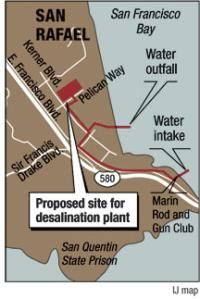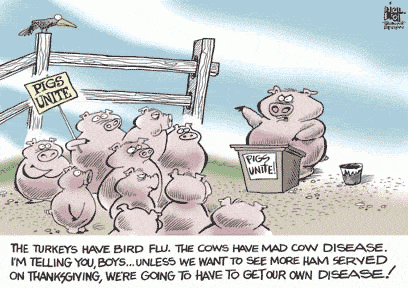 Amending Proposition 13 to assess commercial properties differently than residential property would not just raise more money for cash-strapped California, it would also address the inherent unfairness in the 31-year old initiative.
Amending Proposition 13 to assess commercial properties differently than residential property would not just raise more money for cash-strapped California, it would also address the inherent unfairness in the 31-year old initiative.
{mp3remote}http://media.krcb.org/audio/nbr/8-27-09.mp3{/mp3remote}

Corporate property owners have gotten increasingly sophisticated in the legal mechanisms they use to mask or avoid reporting changes of ownership of their commercial lands, and those tactics result in the loss of several million dollars of tax revenue to Sonoma County every year, says Chief Deputy Assessor Bill Rousseau (right) . He advocates legislation to rein in those maneuvers.
{mp3remote}http://media.krcb.org/audio/nbr/transfers.mp3{/mp3remote}

Business interests and other defenders of Proposition 13 often assert that changing the way commercial properties are assessed would lead to increases costs for small businesses. But San Francisco Assessor Phil Ting notes that the same logic has not seemed to apply to the savings that commercial landowners have been reaping from their underassessed properties.
{mp3remote}http://media.krcb.org/audio/nbr/landlords.mp3{/mp3remote}
Join Close the Loophole on Facebook
 Local activists are urging customers to boycott Whole Foods to protest the company ownership’s opposition to health care reform and organized labor.
Local activists are urging customers to boycott Whole Foods to protest the company ownership’s opposition to health care reform and organized labor.
{mp3remote}http://media.krcb.org/audio/nbr/8-26-09.mp3{/mp3remote}
With four stores in Sonoma County, one in Napa and two in Marin, Whole Foods is the dominant purveyor of organic groceries in the North Bay. Georgia Kelly says that joining the boycott has meant disruptions in her personal patterns, but she feels living out her personal values is more important.
{mp3remote}http://media.krcb.org/audio/nbr/vegetarian.mp3{/mp3remote}
 Ben Boyce (left), director of the Living Wage Coalition, contends that while John Mackey is certainly entitled to his own personal beliefs, others who do not share those beliefs have a responsibility not to provide the financial support to perpetuate them.
Ben Boyce (left), director of the Living Wage Coalition, contends that while John Mackey is certainly entitled to his own personal beliefs, others who do not share those beliefs have a responsibility not to provide the financial support to perpetuate them.
{mp3remote}http://media.krcb.org/audio/nbr/values.mp3{/mp3remote}

"Even in countries like Canada and the U.K., there is no intrinsic right to health care. Rather, citizens in these countries are told by government bureaucrats what health-care treatments they are eligible to receive and when they can receive them. All countries with socialized medicine ration health care by forcing their citizens to wait in lines to receive scarce treatments..." wrote Whole Food CEO John Mackey (right) in his Wall Street Journal essay, "The Whole Foods Alternative to ObamaCare."
"Rather than increase government spending and control, we need to address the root causes of poor health. This begins with the realization that every American adult is responsible for his or her own health." Read the full article here.
Will Shonbrun's response, an Open Letter to Whole Foods Market, was first published in the Empire Report. You can view the main Facebook page supporting the boycott here.
 Unrest in Honduras, following the military coup there two months ago, has not abated, but is being widely ignored by most American media.
Unrest in Honduras, following the military coup there two months ago, has not abated, but is being widely ignored by most American media.
{mp3remote}http://media.krcb.org/audio/nbr/8-24-09.mp3{/mp3remote}
Global Exchange also maintains this extensive webpage with background reports and other details about the current situation in Honduras. You can read the full 12-page report from the delegation that visited Honduras here.

After talking with dozens of people there, Maria Robinson says it isn’t just the poor and working classes who are unhappy about the coup that deposed Honduran President, Manuel Zelaya (left) but many business owners as well.
{mp3remote}http://media.krcb.org/audio/nbr/business.mp3{/mp3remote}

The US volunteer delegation also met with the American Ambassador in Telgucigalpa, an encounter that is reported in considerable detail here.
The Catholic Church and other religious groups in Honduras have not taken a public stance on the regime change there, something the Global Exchange delegation has criticized them for. Still, Robinson says one of the most moving moments during her 8-day visit was an outdoor mass led by an activist priest, Father Andres Tomayo.
{mp3remote}http://media.krcb.org/audio/nbr/mass.mp3{/mp3remote}
Members of the delegation also met with some of the victims of violence inflicted on demonstrators by Honduran military and police, and recorded their statements about the incidents in which they were injured. One of them, Robinson recalls, was a woman whose leg had been ruptured by a tear gas canister fired at close range.
{mp3remote}http://media.krcb.org/audio/nbr/teargas.mp3{/mp3remote}
 The Marin Municipal Water District has taken another significant step toward building a saltwater desalination facility to stabilize their water supplies, but critics remain adamantly opposed to the project.
The Marin Municipal Water District has taken another significant step toward building a saltwater desalination facility to stabilize their water supplies, but critics remain adamantly opposed to the project.
{mp3remote}http://media.krcb.org/audio/nbr/8-21-09.mp3{/mp3remote}

Paul Heliker (right), General Manager of the MMWD, believes that the desalination facility is needed to protect Marin residents from possible future droughts and the economic havoc they could cause.
{mp3remote}http://media.krcb.org/audio/nbr/drought.mp3{/mp3remote}
Sharp questions about the safety and purity of the desalinated water were raised again at this week’s water district meeting, but Heliker says those concerns should have been settled by the results of the district’s own tests of the reverse osmosis technology with the same water that the larger plant would use.
{mp3remote}http://media.krcb.org/audio/nbr/purity.mp3{/mp3remote}
 Adam Scow, California Deputy Director for water programs for the national consumer advocacy group, Food and Water Watch, is among the vocal skeptics who question the need and cost of the proposed desalination plant. He points to a report commissioned by his organization that disputes the underlying assumptions the district uses to make its case for the project. You can read that report here.
Adam Scow, California Deputy Director for water programs for the national consumer advocacy group, Food and Water Watch, is among the vocal skeptics who question the need and cost of the proposed desalination plant. He points to a report commissioned by his organization that disputes the underlying assumptions the district uses to make its case for the project. You can read that report here.
{mp3remote}http://media.krcb.org/audio/nbr/fryer.mp3{/mp3remote}
 For its part, the district has prepared a 9-page slide show on their desalination project, which is much easier to digest than the full Environmental Impact Report, which is posted here. At left is a map showing where the proposed plant would be situated.
For its part, the district has prepared a 9-page slide show on their desalination project, which is much easier to digest than the full Environmental Impact Report, which is posted here. At left is a map showing where the proposed plant would be situated.

Local health officials are bracing for an unusually intense flu season, with the yearly “seasonal” flu compounded by the so-called swine flu, which is already present in the regional population.
{mp3remote}http://media.krcb.org/audio/nbr/8-20-09.mp3{/mp3remote}

This illustration shows the various symptoms associated with the swine flu or H1N1 200 virus. Dr. Mark Netherda, Sonoma County’s Deputy Public Health Officer, outlines the straightforward steps that anyone can take to minimize their exposure to it.
{mp3remote}http://media.krcb.org/audio/nbr/prevention.mp3{/mp3remote}
Is it a good idea to wear a surgical mask when out in public? Only if you’re already sick.
{mp3remote}http://media.krcb.org/audio/nbr/masks.mp3{/mp3remote}
 So why is this being called the swine flu? Dr. Netherda explains its based in the molecular history of the virus (shown at left), and has almost nothing to do with pigs.
So why is this being called the swine flu? Dr. Netherda explains its based in the molecular history of the virus (shown at left), and has almost nothing to do with pigs.
{mp3remote}http://media.krcb.org/audio/nbr/swine.mp3{/mp3remote}
More extensive information about the swine flu nationwide is available from the Centers for Disease Control, which maintains an online map showing the incidence of the disease on a state-by-state basis.

And, on a less serious note...

 Live Radio
Live Radio